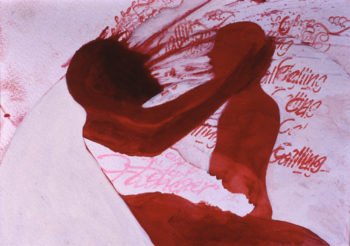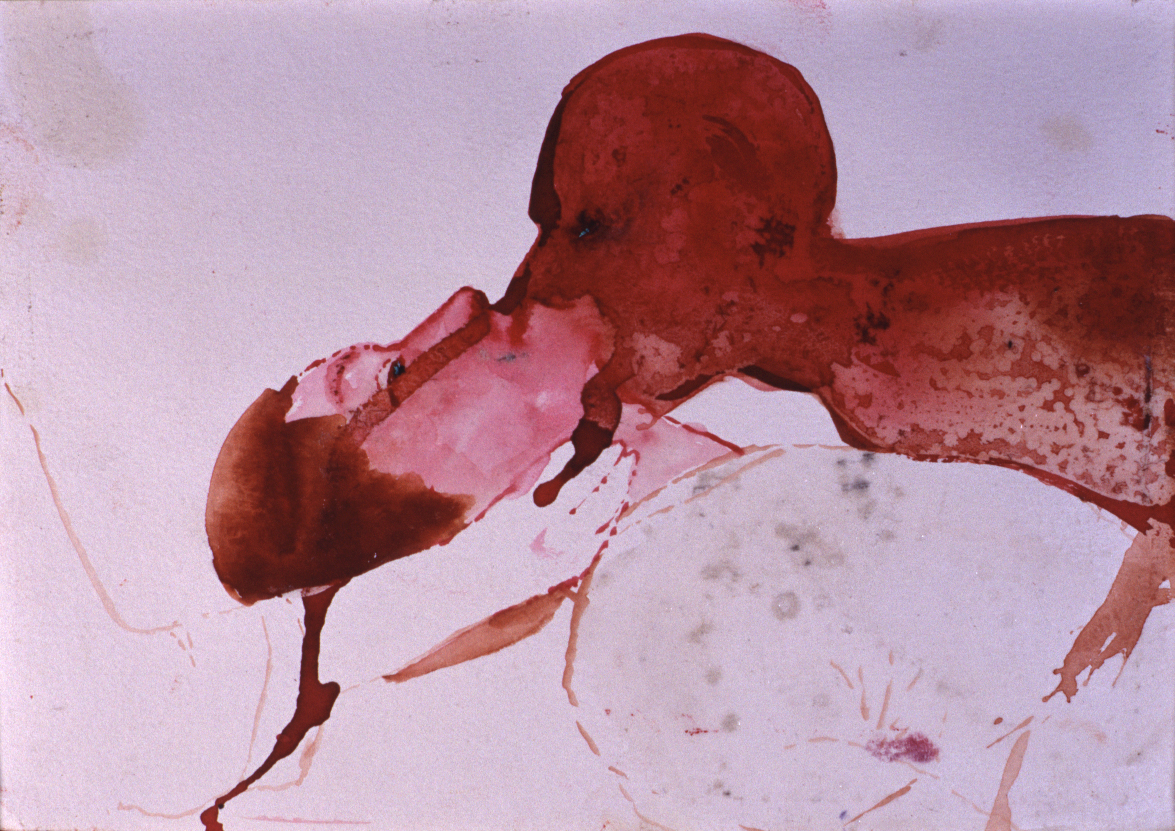Penny Siopis is one of the most influential artists working in South Africa today.

© Penny Siopis
Her career, spanning 30 years, includes her well-known ‘history’ paintings of the 1980s that critiqued apartheid, and subsequent installations and films that explore personal memory in the post-apartheid era. Her wide-ranging multi-media exhibition at the Freud Museum, Three Essays on Shame, celebrated the centenary of the Three Essays on Sexuality (1905) by grafting present-day South African social circumstances onto Freud’s work and milieu. Through the display of paintings and objects that reference Freud’s work, the artist was able to explore the significance of shame in wide cultural themes.
The exhibition was comprised of three interventions into the intimate spaces of Freud’s house. In Freud’s famous study the artist situated seven audio recordings of South African personalities who have all publicly expressed feelings on or about shame. Antjie Krog, author of Country of my Skull (describing her experience as a reporter for the Truth and Reconciliation Commission) reflects on this experience as well as more personal aspects of shame. Edwin Cameron, judge and AIDS and Gay activist, speaks of his personal experience of being HIV positive in the context of the pandemic of AIDS in Africa. Fatima Meer, well-known sociology professor and detainee of the apartheid regime, describes the torture of her political detention as well as more personal memories of ‘shame’, while Paul Verryn, Bishop of the Methodist Church of Johannesburg, and activist priest in the apartheid era, speaks of his personal role in the Truth and Reconciliation hearings.
Penny Siopis is one of the most influential artists working in South Africa today. Her career, spanning 30 years, includes her well-known ‘history’ paintings of the 1980s that critiqued apartheid, and subsequent installations and films that explore personal memory in the post-apartheid era. For this exhibition, Three Essays on Shame, Siopis was invited to install a series of objects and artworks on the theme of shame and sexuality to mark the centenary of Freud’s Three Essays on the Theory of Sexuality (1905). Through the display of paintings and objects that reference Freud’s work, the artist explores the significance of shame in wide cultural themes.

© Penny Siopis
The second intervention, installed in Freud’s dining room, incorporated a series of objects, artworks and film combined to orchestrate a chain of cultural and psychological associations reflecting the psych-sexual state of shame in its broader cultural context. A terracotta figurine (right) in Freud’s collection of antiquities is the trigger for these associations, and is displayed as the keystone if this part of the installation. The figurine (probably of Egyptian origin) depicts a woman in a squatting pose, exposing her genitalia, with one hand gesturing towards the site of exposure. This provocative pose is identified with the character of Baubo of Greek mythology. One of the films included in the installation, To Walk Naked, is a short documentary about a particular instance in apartheid South Africa in which a group of black women stripped in from of white policemen intent on bulldozing their homes, using their nakedness ad ‘shame’ as a weapon of resistance.
The third installation was comprised of paintings and found objects including personal items belonging to Freud. These works, which give form to the imaginative realm of shame, conceptually condense all the complex and contradictory qualities of shame as it specifically relates to sexuality.
A wide range of disciplines and fields of human knowledge, including psychology, politics, anthropology, art and literature, explore the concept of shame, and, like Freud himself, the artist drew on these disciplines in the structure and content of her exhibition.